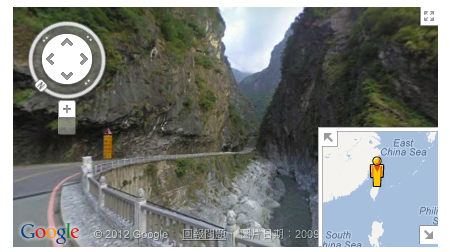Google is continuing to gain points on the mapping front, today launching yet more features for the product at a time when Apple’s offering continues to appear weak by comparison. Today it announced that it has given Street View, which lets users see photographic images of particular locations, its biggest update yet, covering 250,000 miles of roads across more than 17 countries.
The news follows another update from a little earlier in which Google added time zone functionality into its Maps API, giving the service even more local focus, and boosting its profile with developers aiming at audiences in different markets. A blog post notes that general access for the time zone API is limited to 2,500 requests per day. API for business gets up to 100,000 requests per day.
These follow on from an update last Friday that saw Google update Google Maps for mobile browsers, giving iOS users a way of accessing maps on their iPhones and iPads while Google continues to work on a new, native app for that platform. Part of that update included the ability to use StreetView on iOS devices, and now that looks like it was laying the groundwork for today’s news.
[Backstory: As iOS 6 users know (and those who are on iOS 5 but have yet to change possibly because of this issue), in the latest version of Apple’s mobile operating system, the company dropped Google Maps for its native mapping service in favor of a hybrid of third-party sourced and Apple-created data, which many have found to be more than lacking in comprehensiveness.]
The Street View update today, according to Ulf Spitzer, Street View Program Manager, will increase Street View coverage in Macau, Singapore, Sweden, the U.S., Thailand, Taiwan, Italy, Great Britain, Denmark, Norway and Canada. (The image here is of the Taroko Gorge in the Taroko National Park. Something that would not have been included in Google’s previous coverage of Taiwan now can be toured as if you are driving through it.)
It will also see Google creating “special collections” — essentially lovely, highly visual features — in six main countries, South Africa, Japan, Spain, France, Brazil and Mexico, along with smaller collection updates in other countries. Armchair travelers, rejoice!
While these collection updates at the moment do not seem to be tied to any commercial projects, they potentially lay the groundwork for much more visual interactions that Google can have with users, and that in turn can bring along a whole new category of display advertising along with it. That’s an area where Google is already gaining some ground against the likes of Facebook and Yahoo, and this could give it another inch or mile (or kilometer) on that front again.
